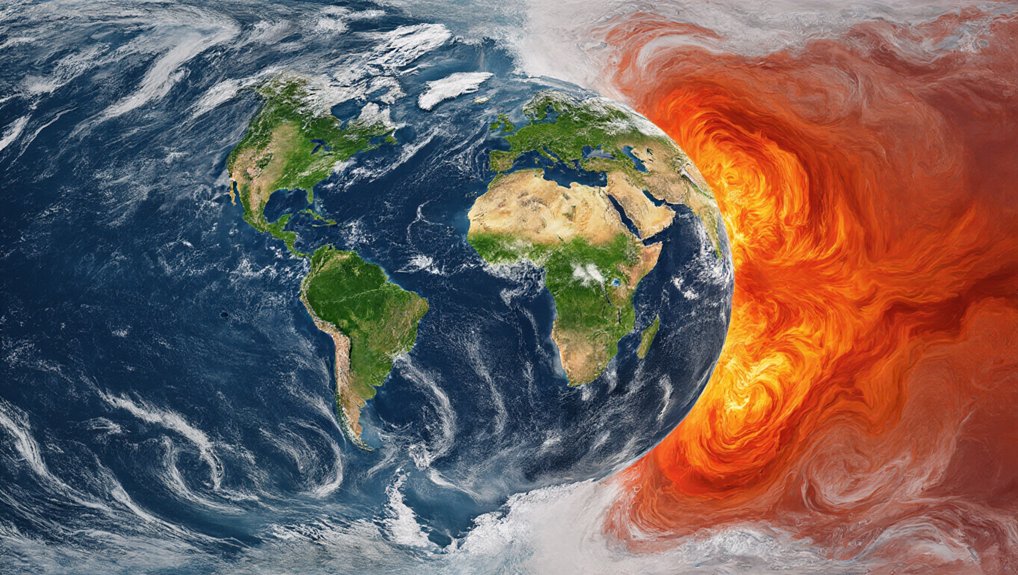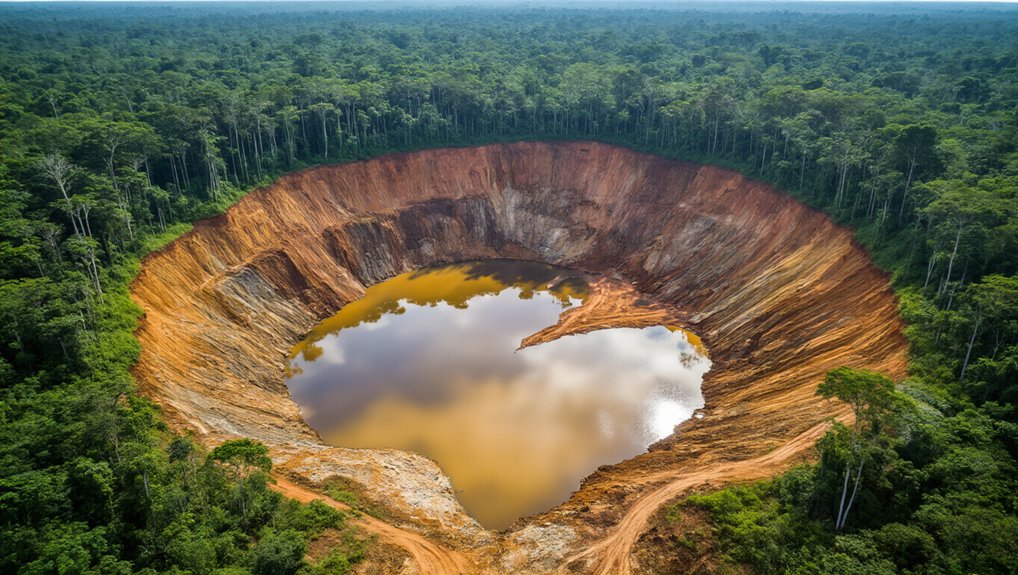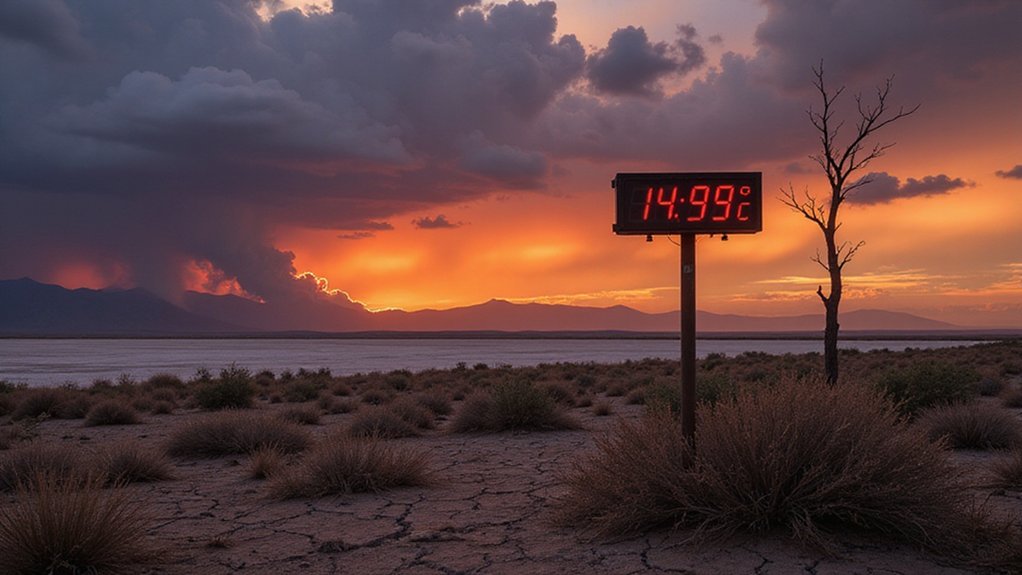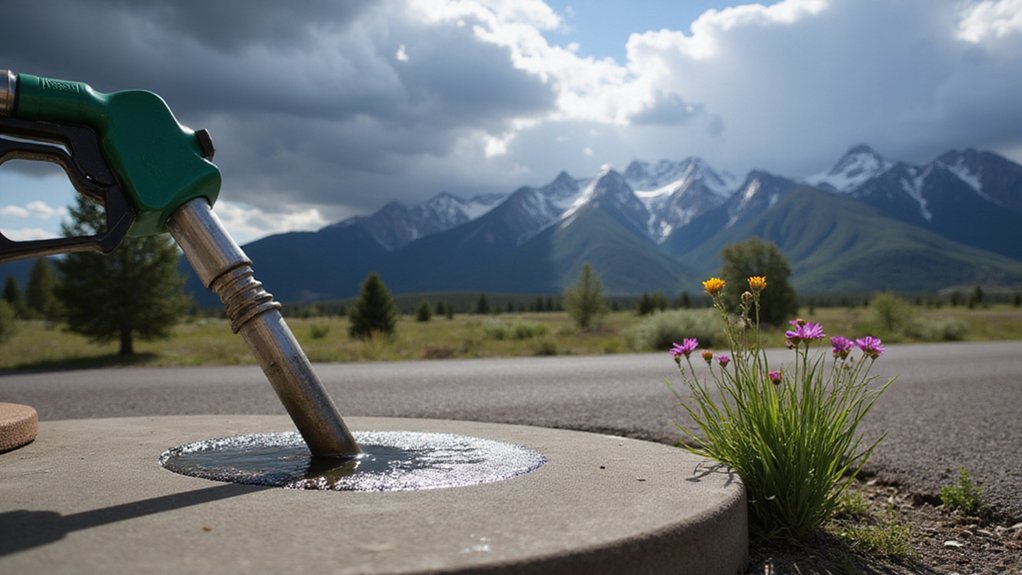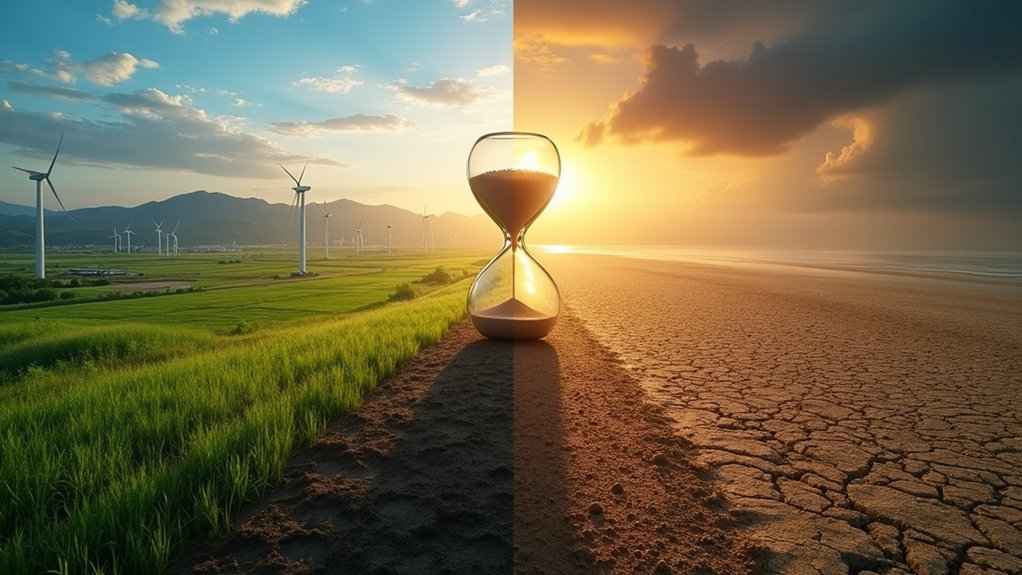While everyone’s been arguing about whether climate change is real, January 2025 just smashed temperature records—again. The month clocked in at 1.75°C above pre-industrial levels, making it the warmest January ever recorded. That’s the 18th record-breaking month out of the last 19. Let that sink in.
Earth’s been warming at about 0.11°F per decade since 1850. Doesn’t sound like much? Well, it adds up to roughly 2°F total. And here’s the kicker—2025 isn’t expected to cool down from 2024’s record levels, despite La Niña supposedly bringing relief. So much for that theory.
Earth’s warming 0.11°F per decade since 1850—doesn’t sound like much until it adds up.
The numbers paint a stark picture. There’s a 70% chance the next five years will average above the critical 1.5°C threshold. Scientists give 2025 a 99.9% chance of ranking among the warmest years ever. They’re basically saying it’s guaranteed to be hot. Really hot.
What’s causing this mess? Human-produced greenhouse gases trap more energy than Earth can radiate back to space. Simple physics, complicated consequences. Even with El Niño fading and La Niña emerging, temperatures barely budged. February and March 2025 dipped slightly from 2024’s peaks, but calling it “cooling” would be laughable.
Climate models suggest scientists actually underestimated both climate sensitivity and aerosol forcing. Translation: things are worse than the official reports claimed. If the tropics stay neutral—no El Niño or La Niña—2025 might even beat 2024’s record. Because apparently breaking records every month isn’t enough.
The ripple effects touch everything. Rising temperatures mess with the water cycle—evaporation, clouds, rainfall patterns. The carbon cycle’s out of whack. Plants and animals can’t adapt fast enough. Surface water supplies are shifting in ways that spell trouble for billions of people. The Arctic warming is predicted to be more than three and a half times the global average, accelerating ice melt and ecosystem collapse. Arctic sea ice just hit its lowest January extent on record, tying with 2018 at 6% below average. These extreme temperatures are pushing human bodies to physiological limits, with core temperatures approaching dangerous thresholds during extended heatwaves.
The huge temperature spike during the 2023-24 El Niño showed how these natural cycles now ride on top of human-caused warming. It’s like adding gasoline to an already raging fire. And despite all the data, all the broken records, somehow we’re still debating whether this is happening.
Meanwhile, January 2025 just became the hottest January in human history.
References
- https://wmo.int/news/media-centre/global-climate-predictions-show-temperatures-expected-remain-or-near-record-levels-coming-5-years
- https://www.climate.gov/news-features/understanding-climate/climate-change-global-temperature
- https://www.ncei.noaa.gov/access/monitoring/monthly-report/global/202503
- https://climate.copernicus.eu/copernicus-january-2025-was-warmest-record-globally-despite-emerging-la-nina
- https://www.columbia.edu/~jeh1/mailings/2025/2025GlobalTemperature.15April2025.pdf
